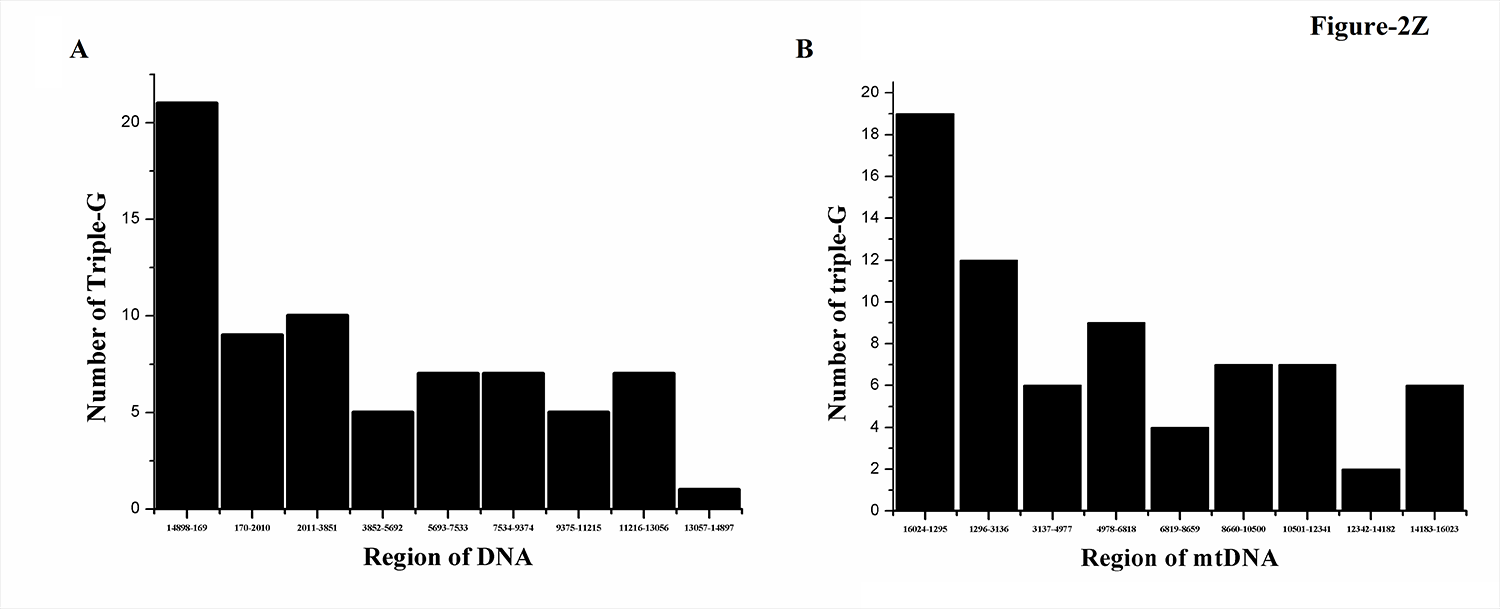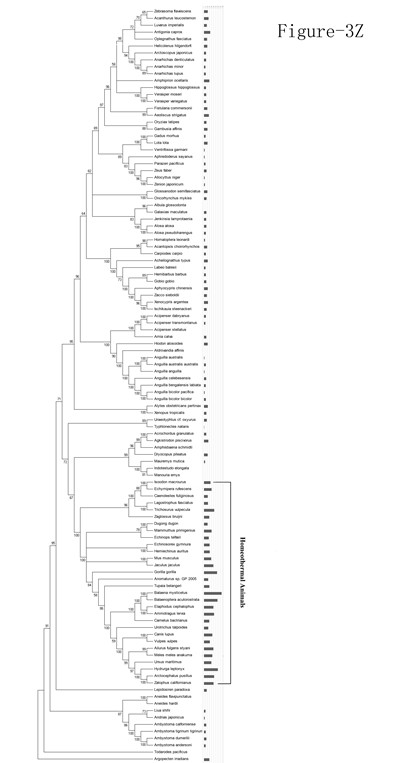Researchers in the radiotherapy group, Institute of Modern Physics, Chinese Academy of Sciences (IMP) revealed the mechanism involved in the IR-induced non-randomized mtDNA damage in Scientific Reports, a new multidisciplinary publication from Nature Publishing Group.
Although it is well known that there are mutation hot spots in mtDNA, it is uncertain whether there are damage hot spots remain elusive. In their work, the regional DNA damage of mitochondrial genome after ionizing radiation was determined by real-time quantitative PCR.
The mtDNA damage level was found to be dose-dependent and regional unequal (Figure 1). The control region was most susceptible to oxidative damage. GGG, as an typical hole trap during charge transport, was found to be disproportionally enriched in the control region ( Figure 2). A total of 107 vertebrate mitochondrial genomes were then analyzed to testify whether the GGG enrichment in control region was evolutionary conserved. Surprisingly, the triple G enrichment can be observed in most of the homeothermal animals, while the majority of heterothermic animals showed no triple G enrichment (Figure 3). These results indicated that the triple G enrichment in control region was related to the mitochondrial metabolism during evolution.
This work was supported by grants from the National Basic Research Program of China (973 Program) (2010CB834202), National Natural Science Foundation of China (10835011).
The article can be linked as follows:http://www.nature.com/srep/2012/121029/srep00780/full/srep00780.html

Figure 1. Radiation-induced dose-dependent and regional specific mtDNA damage. (Image by IMP)

Figure 2. Computational scanning of the triple G across the mitochondrial genome. (Image by IMP)

Figure 3. Computational score of the abundance ratio of triple G in D-loop region of 107 vertebrates (Image by IMP)

